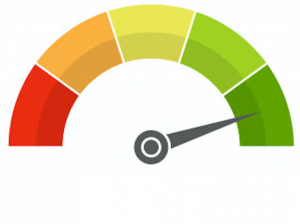Numerical methods for Large Eddy Simulation using AVBP
From Monday 17 April 2023 to Friday 21 April 2023
Training
Cerfacs is Qualiopi certified for its training activities
Duration : 5 days (35 hours)
Satisfaction index

In November 2022, 100% of participants were satisfied or very satisfied
(results collected from 11 respondents out of 15 participants, a response rate of 73%)
Abstract
The AVBP code is a parallel code of fluid mechanics that solves compressible Navier-Stokes equations for laminar and turbulent reactive flows, in 2D and 3D, on unstructured and hybrid meshes, with third order Taylor Galerkin schemes. The resolution of these equations is based on the Large Eddy Simulation (or Large Eddy Simulation) approach. Reduced chemical kinetics according to the Arrhenius law coupled to the TFLES model for sub-grid flame-turbulence interactions make possible to treat combustion phenomena. AVBP can also calculate two-phase flows using a Lagrangian or Eulerian solver. AVBP applies to aeronautical combustion chambers, turbomachinery, industrial furnaces and safety issues, it allows for example to evaluate polluting emissions (CO, NOx and soot), to treat thermo-acoustic instabilities or detonation phenomena. AVBP is a world-famous code in the field of combustion, used by many laboratories (IMFT in Toulouse, EM2C in Centralesupelec, TU Munich, Von Karmann Institute, ETH Zurich, etc.) and in industry (SAFRAN AIRCRAFT ENGINES, SAFRAN HELICOPTER ENGINES, ARIANEGROUP, HERAKLES, TOTAL, etc.).
Objective of the training
The objective of the training is twofold: firstly, to understand the fundamental principles of Large-Scale Simulations for compressive reactive two-phase flows: numerical methods, boundary conditions, LES approach and closure models for LES, combustion as well as two-phase flows through theoretical courses; on the other hand, to learn how to use the AVBP code on the perimeter of two-phase reactive flows through tutorials supervised by experts of the code.
Learning outcomes
At the end of the training, participants will be able to:
• Describe the equations solved in AVBP for computing reactive turbulent two-phase flows.
• Specify the available models to deal with characteristics input and output boundary conditions, wall treatments, chemical kinetics, sub-grid interactions (turbulence and turbulence-flame), two-phase flows.
• Set up the computation of a reactive two-phase turbulent flow in a given geometry, from the generation of the initial solution of and the boundary conditions, through the parametrization of the computation in terms of numerical and physical models, to the launching of the computation on parallel computing machine, and until post-processing of the results.
Teaching methods
The training is an alternation of theoretical presentations and practical work. A multiple choice question allows the final evaluation. The training room is equipped with computers, the work can be done in sub-groups of two people.
Referent teacher: Eleonore Riber
Target participants
This course is intended for engineers, physicists, computer scientists and numerical analysts wishing to learn the LES reactive turbulent two-phase flows and how to use the AVBP code.
Prerequisites and registration
In order to follow this course, you need to:
- Know Unix commands.
- Know Basic knowledge of Fortran.
- Know numerical flow simulations.
- Have level B2 of CEFR (the training can take place in French of English depending on the audience).
To verify that the prerequisites are satisfied, the following questionnaires must be completed. You need to get at least 75% of correct answers in order to be authorized to follow this training session. If you don’t succeed it, your subscription will not be validated. You only have two chances to complete them.
Questionnaire 1 : https://forms.gle/VpxDVSGM1hgkf1XT7
Questionnaire 2 : https://forms.gle/SNzUrtReUPDBQsKz9
Questionnaire 3 : https://forms.gle/DW8Hm74wpiLjYtCk7
Registration
After completing the pre-requisite tests and obtaining at least 75% correct answers, you can register here
Deadline for registration: 15 days before the starting date of each training
Before signing up, you may wish to report us any particular constraints (schedules, health, unavailability…)at the following e-mail address : training@cerfacs.fr
Fee
- Trainees/PhDs/PostDocs : 560 € excl. tax
- CERFACS shareholders/CNRS/INRIA : 1400 € excl. tax
- Public :2800 € excl. tax
Program
(Every day from 9h to 17h30)
Day 1
. 9h00: Welcome and coffee
· 9h30: Introduction
· 10:50: Break
· 11h00: Handson: Setting up a first case using AVBP: convection of a 2D vortex in a periodic domain
· 14h00: NSCBC formalism for compressible code & Boundary Conditions in AVBP
· 15h30: Break
· 15h45: Hands-on: Boundary conditions and acoustic waves
Day 2
• 9:00 : Handson: Convection of 2D vortex with inlet/outlet boundary conditions
• 10h45: Break
• 11h00: Handson: Sudden expansion
• 14:00: Thermochemistry and laminar combustion modeling
• 15h00: Handson: 1D flame with global chemistry
• 16h15: Break
• 16h30: Handson: 1D flame with ARC chemistry
Day 3
• 9:00: Turbulent combustion modeling.
• 9h45: Handson: DNS 2D of a Bunsen flame
• 11h00: Break
• 11h15: Handson: TFDNS 2D of a Bunsen flame
• 14h00: Spray flame modeling – Part1
• 15:00: Handson: A turbulent spray burner: the Cambridge burner
• 16:15: Break
• 16:30: Handson: droplet evaporation using a simplified model
Day 4
• 9h00: Spray flame modeling – Part2
• 9h45: Handson: droplet evaporation using a complex model
• 10h45: Break
• 11h00: Hands-on: 1D spray flame structure
• 14h00: Hands-on: Setting up a reacting case from scratch in a combustor
Day 5
• 9:00: Hands-on: Troubleshooting combustor runs
• 14h00: Other AVBP features and AVBP roadmap
• 15h00: Personal project-related questions
Evaluation of learning
A final exam will be conducted during the training.
No content defined in the sidebar.

